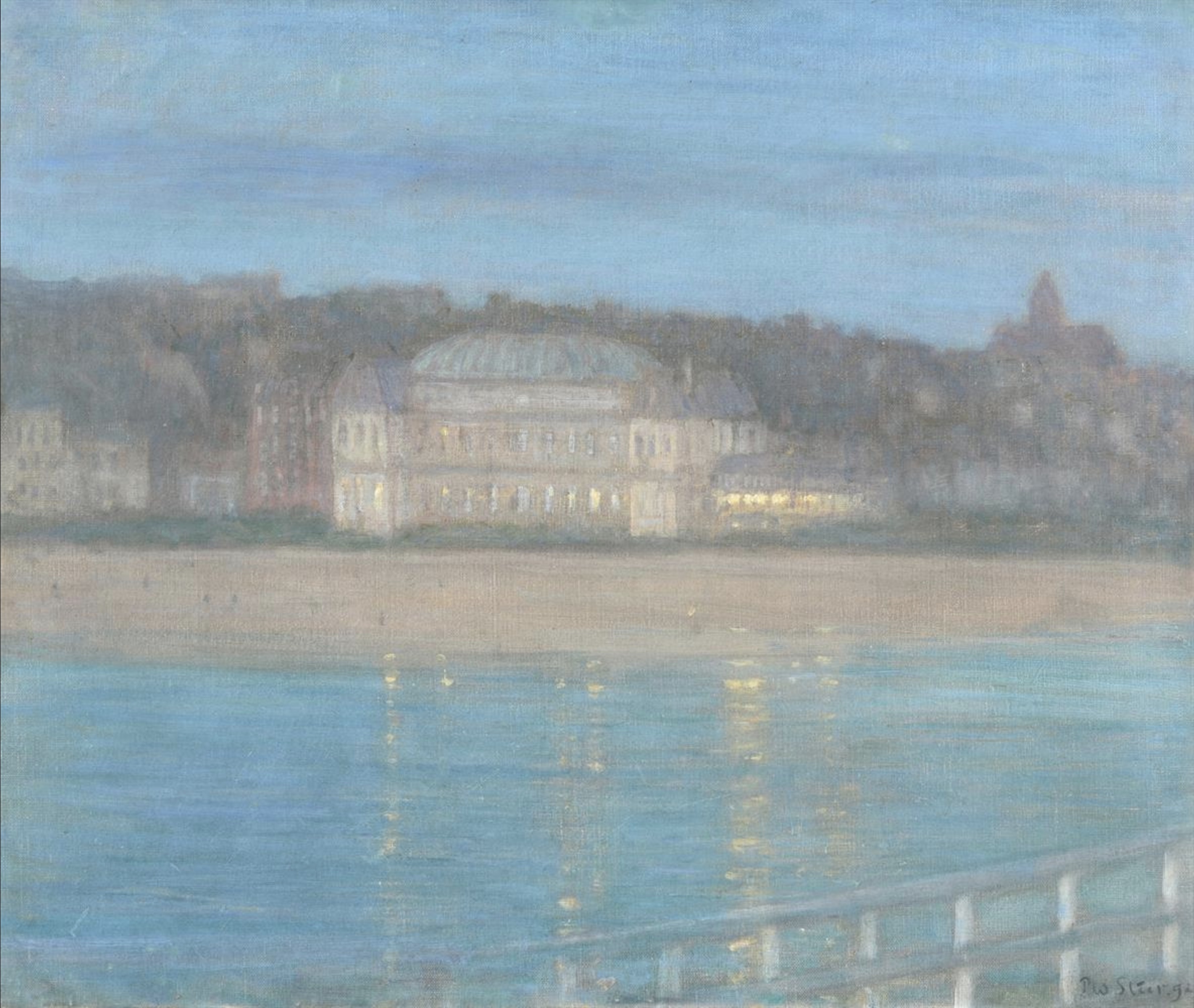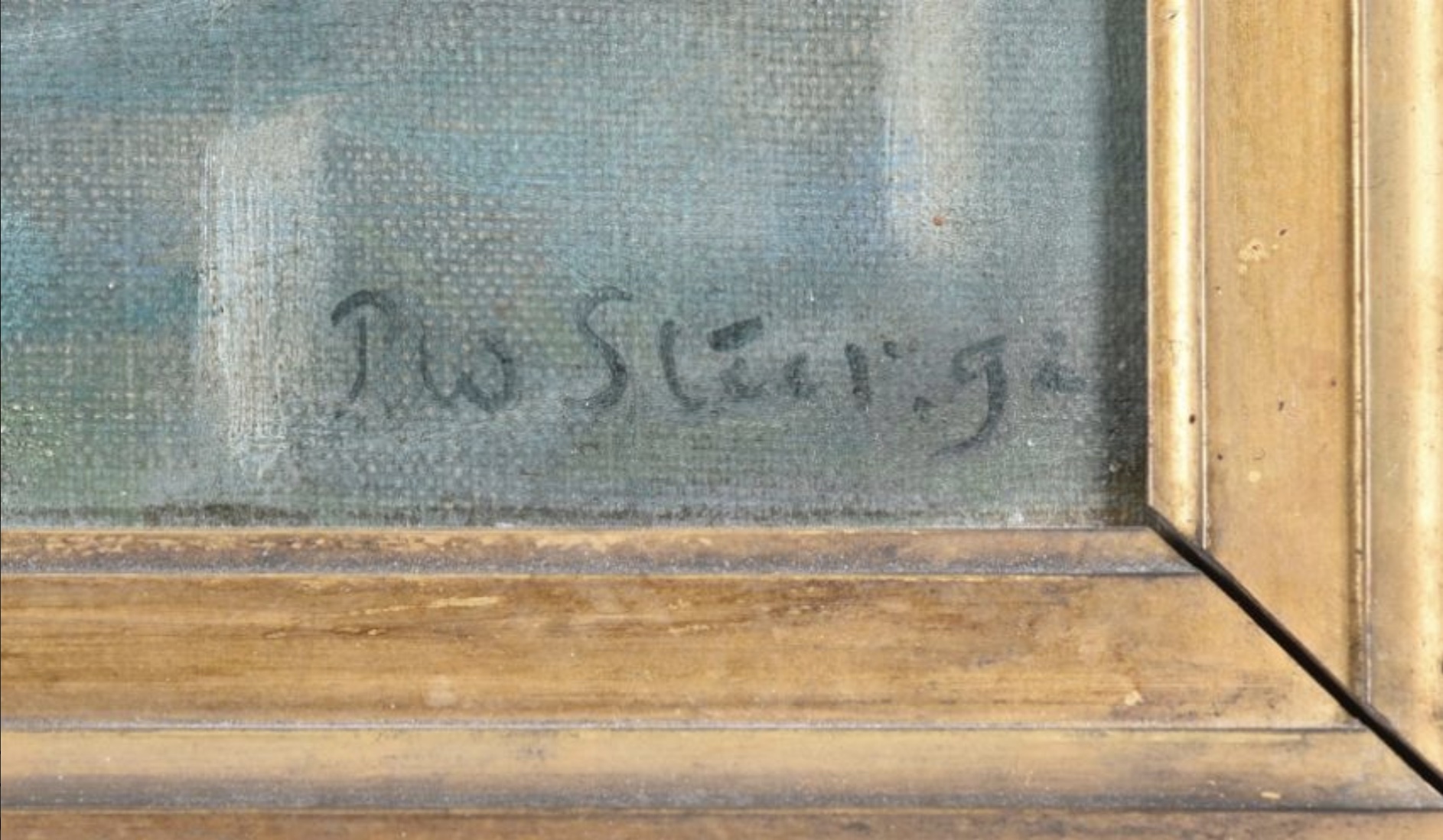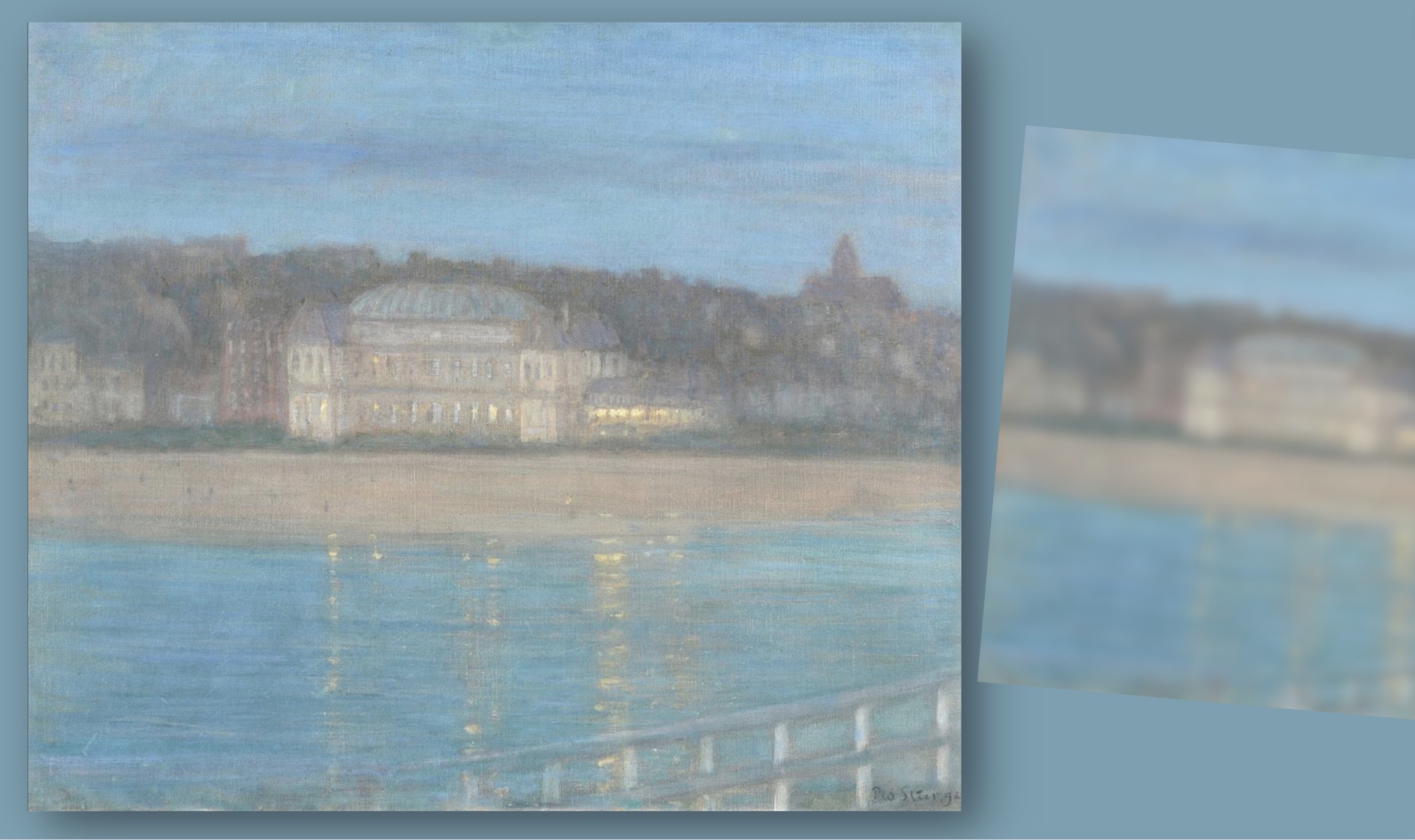#Rare #Philip #Wilson #Steer #painting #Berkshire #sale #Antique #Collecting
 A painting by the celebrated British Impressionist artist, Philip Wilson Steer (1860-1942), which hasn’t been seen in public since its exhibition in 1894, will sell in a Berkshire sale.
A painting by the celebrated British Impressionist artist, Philip Wilson Steer (1860-1942), which hasn’t been seen in public since its exhibition in 1894, will sell in a Berkshire sale.
By this date it was in the collection of Thomas Humphry Ward, an art critic at The Times, who loaned it to the Goupil Gallery in London for the show. The oil on canvas, titled: The Casino, Boulogne-Sur-Mer has remained in private hands for the last hundred and thirty years, but will now be offered in Dreweatts’ upcoming Modern & Contemporary Art sale on July 11.

The auction house said it presents a thrilling opportunity for collectors of British Impressionists and in particular Steer, to purchase a work from the artist’s time spent in Boulogne.
A pioneer in British art, he brought Impressionism to England superseding the critique of the art establishment in England at the time.
Born in Cheshire, Philip Wilson Steer had art in his blood as he was the son of a portrait painter and art teacher. Having attended Hereford Cathedral School, he went on to study at the Gloucester School of Art and the Kensington Art Schools. When he was rejected by the Royal Academy he headed to Paris to study (between 1880-1881) at the Académie Julian and the distinguished École des Beaux Arts, where he was greatly influenced by Whistler, Manet and the French Impressionists.
On his return to England he set up a studio in London where he created Impressionist paintings of seascapes and beaches, experimenting in light and encapsulating a sense of what he saw and felt, while looking at a range of breathtaking views. Many painters, alongside Steer had become disillusioned with the study methods of the Royal Academy, which involved teaching from antiquity, rather than real life (French artists were painting outside, or ‘en plein air’). This impelled Steer to become one of the founding members of the New English Art Club in 1885, which was established to provide a more flexible platform for contemporary artists and purposely did not appoint a President, as was typical with other societies. The Goupil gallery where Steer held his first solo exhibition had a close connection to the club and served as a stage to specifically showcase the work of contemporary artists. Steer would later inspire new artists in his role teaching at Slade School of Art beside Henry Tonks and Frederick Brown, which went hand in hand with his popularity at the New English Art Club.

The Casino, Boulogne-Sur-Mer was painted following a trip to Boulogne in 1888. Influenced by his counterparts, who would later become known as the Impressionists, there are direct comparisons with the work of Monet and Sisley. In the painting he has captured the light and shifting weather, painting what the eye saw, rather than what it expected to see. Dreweatts art specialist, Francesca Whitham, said: “He has used loose, short brushstrokes that together give an overall impression and a vibrancy of colour. Steer has chosen to paint a scene of contemporary life and the urban environment, which went against the traditional teachings of the Royal Academy.”
She continued: “The pink hues and hazy blues lie draped across the canvas. The viewer is drawn to the warmth of the light radiating from inside the casino which captures the hum-drum atmosphere and excitement of the evening ahead. The dazzling light reflects across the water’s edge emphasising the rippling waters as they rush towards the boardwalk edge that cuts diagonally across the lower right corner of the composition. Look closely and small brush marks across the sand show passers-by enjoying a walk at dusk along the shore. These details emphasise the way in which the artist has captured a moment in time whilst maintaining the movement and energy.”
Steer recorded in his sketchbook of 1888 (now held at the V&A archives), his trip to Boulogne and in particular his visit to the casino, named Palais de Neptune. It was the first to be built in Boulogne, by the engineer Jules Marguet and became a fashionable destination for locals and foreigners, travelling mainly from England. His sketch of the present view shows his thought process and ideas for colours as his sketched out the composition as he stood on the boardwalk even capturing the lights from the casino shining on the water with small wavy lines.
Other studies in the sketchbook show how Philip Wilson Steer was playing around with different compositions. In one, he has walked further down the boardwalk towards the church on the hill with figures in the foreground, another is more face on to the casino and shows in more details the pavilion to the right-hand side. The survival of these drawings provides an amazing insight into the artist’s workings out and development of an idea from sketch pad to full scale oil painting.
Francesca Whitham said: “Having been held in private hands since 1894, we are so excited to be able to bring this mesmerizingly beautiful painting of Boulogne-sur-Mer to the market. It represents a truly rare opportunity to acquire an early work by the artist.”
It is estimated to fetch £50,000-£70,000.




